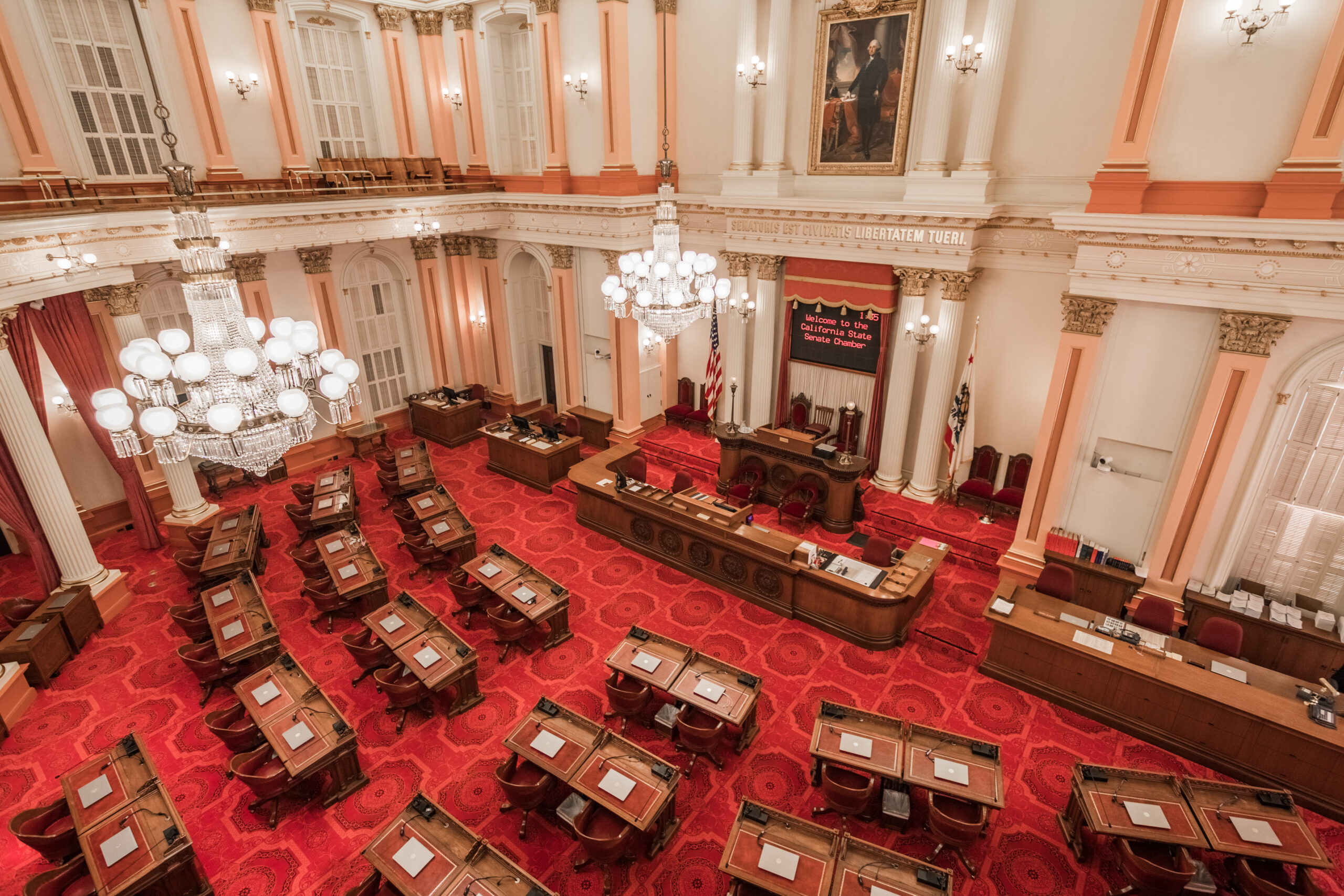
In 2019, California lawmakers introduced more than three dozen bills relating to water supply and storage, clean water for people and wildlife, and even reductions in greenhouse gas emissions to mitigate the effects of a changing climate on future water supplies.
Since his first days in office, Governor Newsom made water – clean, affordable, reliable – a centerpiece of his new administration. And, for good reason.
The state faces serious water challenges that impact communities, agriculture and wildlife. More than 1 million Californians don’t have access to clean drinking water, and shrinking groundwater supplies throughout the Central Valley are hurting farming and local economies. On top of that, a changing climate coupled with a growing state population are stressing a finite resource like never before.
Besides launching the Water Resiliency Portfolio, which aims to create a roadmap for meeting the state’s water needs through the end of the century, Newsom challenged state legislators to take up bills this year that tackle the state’s most serious water challenges. Lawmakers rose to the challenge, introducing over three dozen bills relating to water supply and storage, clean water for people and wildlife, and even reductions in greenhouse gas emissions to mitigate the effects of a changing climate on future water supplies.
Here’s a rundown of the bills important to Sustainable Conservation’s work that made it to Newsom’s desk:
SB-200 – Safe & Affordable Drinking Water Fund
Newsom signed AB-200 into law in July.
What does it do? Establishes the Safe and Affordable Drinking Water Fund in the State Treasury to help water systems provide an adequate and affordable supply of safe drinking water in both the near and the long term. The bill would provide that monies in the fund are available to the State Water Board to fund grants, loans, contracts or services to assist eligible recipients.
How is it paid for? In the first year, $100 million of the funding will come from the Greenhouse Gas Reduction Fund (GGRF) and $30 million from the General Fund. After the first year, SB 200 states that funding will be 5% of the GGRF continuously appropriated – capped at $130 million per year. The agreement includes general fund monies as a backstop if 5% of the GGRF is less than $130 million in any year. Funding will sunset in 2030.
Significance to Sustainable Conservation’s work? We wholeheartedly support California’s 2012 landmark law (the first of its kind) that every human being has the right to safe, clean, affordable and accessible water. SB-200 supports our vision of a California where people, the environment and farming thrive on clean, reliable and accessible water. Highlights of our clean-water work: Managing dairy manure for clean water | Refilling our underground savings account | Rewarding coastal farmers for boosting California’s water future
SB-1 – California Environmental, Public Health, and Workers Defense Act
Passed out of the legislature in mid-September and Newsom vetoed on September 27.
What does it do? Bill would effectively keep in place California standards under the Clean Air Act, Clean Water Act, Safe Drinking Water Act, Endangered Species Act and Fair Labor Standards Act as they existed when former-president Obama left office.
Why did Newsom veto? Newsom stated that while he agreed with the principles of SB-1, the legislation would undermine carefully negotiated agreements between environmental and agricultural interests regarding the Delta, and Sacramento and San Joaquin rivers. The voluntary agreements will provide a regulatory framework for protecting fish and wildlife, irrigation for farms, water quality and other water uses that the governor argues would be undone if SB-1 became law.
Significance to Sustainable Conservation’s work? A veto of SB-1 does not impact Sustainable Conservation’s ongoing efforts in leading broad alliances to solve the toughest challenges facing our land, air and water. Check out our website to find out how we’re helping business, landowners and government steward the resources we all depend on in ways that are just and make economic sense.
AB-658 – Groundwater Storage
Newsom signed into law in September.
What does it do? Currently, the Sustainable Groundwater Management Act (SGMA), which California passed in 2014, requires significantly over-drafted groundwater basins in the state, primarily in the San Joaquin Valley, to bring their groundwater supplies into balance by 2040. AB-658 would authorize local groundwater agencies to apply for a conditional, temporary permit to divert excess surface water for underground storage to advance the groundwater-sustainability and SGMA goals of impacted basins.
Significance to Sustainable Conservation’s work? We support AB-658 because it enables irrigation districts, water managers and farmers to utilize excess floodwater more easily to recharge depleted groundwater supplies in ways that support existing environmental protections. Highlights of our groundwater-recharge efforts: Refilling our underground savings account | Replenishing Groundwater | 2018 Annual Report
AB-293 – Greenhouse Gas Offsets for Agriculture
Newsom signed AB-293 into law in July.
What does it do? The California Global Warming Solutions Act of 2006 requires that the state reduce greenhouse gas emissions by at least 40% below 1990 levels by 2030. To achieve that goal, the most ambitious of any U.S. state, AB-293 would require the California Air Resources Board to consider developing additional greenhouse-gas offset protocols, including those for the enhanced management of agricultural and natural lands, and for the enhancement and restoration of wetlands.
Significance to Sustainable Conservation’s work? AB-293 supports our ongoing, award-winning work to ensure the sustainable management of working and private lands across a variety of natural resources and for the benefit of people and the environment. Sustainable Conservation intends to be a key participant in talks about how our ongoing groundwater recharge, dairy-manure irrigation, and accelerated habitat restoration efforts can be part of the long-term climate solution.
